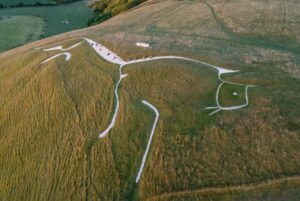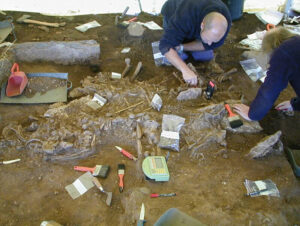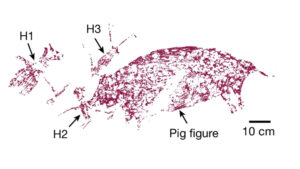Eleven thousand years ago, before hieroglyphics, the wheel, and even Stonehenge, a group of early people in what is now Turkey built the world’s first temple. Known as Göbekli Tepe, it predates other famous Neolithic monuments by thousands of years. And it challenges many preconceived notions about humanity’s development.
Background
Göbekli Tepe means “hill of the navel” or “belly hill” in Turkish. This is because the site is a tell — an artificially built mound used for human settlements. It lies in Turkey’s Urfa Province, close to the Syrian border.
Turkish and American anthropologists found parts of it in the 1960s but mistook it for a medieval cemetery. However, more thorough excavations and radiocarbon dating in the 1990s by German archaeologist Klaus Schmidt revealed that it dates back to when humanity began taking its first civilized steps.
For this reason, some refer to the site as the Turkish Stonehenge. However, it is 6,000 years older than its English counterpart. It predates the use of metal tools and many of humanity’s earliest inventions.

Göbekli Tepe. Map: Shutterstock
Situated in the limestone-rich Taurus Mountains, the 10-hectare site contains 15m high circular and rectangular pillars. It might have had a roof at some point. Some columns are also T-shaped — an innovative building technique, according to UNESCO.
Mysterious carvings
These pillars, up to five meters tall, contain carvings of vultures, snakes, foxes, deer, and domestic animals. Historians believe that these reliefs displayed the religious beliefs of these hunter-gatherer groups. It is unclear if these carvings were deities, or totems, or were used to ward off evil. Some suggest that this was a pilgrimage site; others, that it was a communal gathering place.
There is a Turkish legend that some have linked to the temple’s recurring motif of snakes. The story involves a poor young man named Tahmasp who became trapped in a cave of snakes. Here, he encountered the Queen of Snakes, Shahmaran, who was half-snake, half-woman. The two fell in love.
When it was time to return to the surface, Tahmasp was sworn to secrecy about the underground kingdom. Unfortunately, the surface dwellers discovered his secret and killed Shahmaran. Because of her death, snakes became the nemesis of humanity.

These animal reliefs might be linked to Stone Age religion. Photo: AlicanA/Shutterstock
The builders followed a complex design seemingly beyond the capability of the time. The site is “united in an almost perfect equilateral triangle,” according to Israeli scholars Gil Haklay and Avi Gopher.
This deliberate symmetry had a purpose, but what? To align with the stars, or appease their gods? Intriguingly, archaeologists have also found remnants of animal sacrifice and even human skulls.

Animal reliefs on the temple megaliths. Photo: OZGIOUN SAMPRI/Shutterstock
Hundreds of builders required
Beyond the intellectual leap required for such a design, the construction took great physical strength and coordination. Over 500 people must have carried these stones, which weigh up to 50 tons, from a nearby quarry to the site, says Klaus Schmidt, the temple’s original discoverer.
These ancient people carved the stones with rudimentary stone tools. For an unknown reason, the complex is layered; that is, the hunter-gatherers repeatedly buried and built over the site, thus creating the mound. When completed, it became a sort of cathedral on a hill.
Despite its importance, archaeologists have only uncovered less than five percent of the site. Other structures may lie beneath the surface. Surveys indicate another 15 to 20 buried enclosures, plus some destroyed sections. But despite erosion and weathering, most of the stones remain in good condition.
Initially, our nomadic ancestors followed migrating animals. However, Göbelki Tepe signaled the beginning of a more settled life for humanity. This may have ultimately led to the temple’s demise.
Researcher Sandra Scham claims that farming destroyed sections of Göbekli Tepe, showing that its significance had declined by then. Most likely, the invention of agriculture prompted these hunter-gatherers to abandon their original practices and neglect the stones.

Göbekli Tepe contains many layers on top of each other. Photo: Nejdet Duzen/Shutterstock
Conclusion
Despite the importance of this Stone Age building, its origin and significance remains obscure. Few tourists visit it. Much remains about it that we still do not know, although crumbs of information surface occasionally. Just recently, archaeologists have discovered grinding stones and hammer stones here.
But apart from Göbekli Tepe’s meaning, the main question is how these early Stone Age people managed to conceptualize and construct such a complex monument.






